Silver Bell Shapped Like Woman in Dress With Armraised
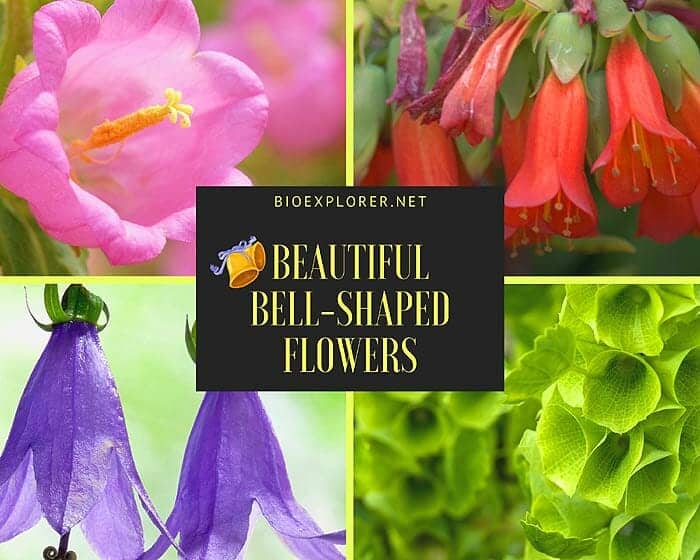
The bell-shaped flowers are trendy because they are known for their beauty, colors, and variations. These flowers are common in many parts of the world, including the United States.
The flowers that look like bells can also be found in some wild areas, and some grow in their gardens. Featuring green, blue, purple, white, pink, and many colors, these bell-resembling flowers appear on different plants, including some trees.
Flowers that look like upside down bells give the person who looks at them a sense of excitement and can add a stunning visual to any garden. These beautiful flowers can be used for many purposes such as decoration, using it in weddings, making wreaths, and lovely gifts.
Bell-Shaped Flowers
Here is a collection of all bell-shaped, trumphet-shaped, tubular-shaped, or cup-shaped flowers in the world of flowers.
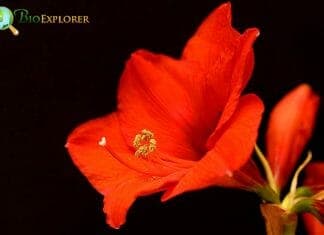
Amaryllis
Perennials
The pretty amaryllis flower, often given away at Christmas, is often seen as a sign of festive joy. While this is true, this flower has many other meanings as well. The Amaryllis flower is available in various shades, including purple, orange, white, yellow, and red.
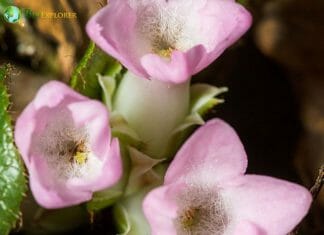
Arbutus
Shrubs/Trees
Arbutus is a genus of 12 species of recognized flowering plants in the Ericaceae family, native to the temperate regions of North America, Western Europe, the Mediterranean, and the Canary Islands. Arbutus species are typically characterized by bell-shaped pink or white blooms in loose terminal racemes and by fleshy orange or red berries with a remarkably irregular surface.
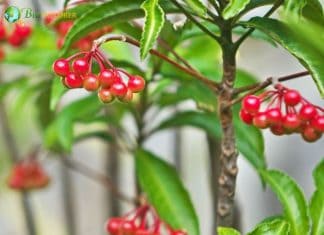
Ardisia
Shrubs/Trees
Ardisia (marlberry or coralberry) is a genus of plants in the Primulaceae family. It was part of the ancient Myrsinaceae family, now recognized as the Myrsine family. The Ardisia genus includes more than 700 recognized species of flowering plants. Usually, the flowers have 4 or 5 green sepals and a bell-shaped crown of 4 or 5 pink or white petals
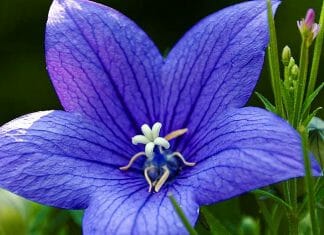
Balloon Flower
Perennials
Commonly known as the blue balloon flower, Japanese snowdrop, Chinese snowdrop, Chinese bellflower, and Korean snowdrop, the Balloon Flower is a flowering perennial in the Campanulaceae family, including lobelia and wood hyacinth, and is the only member of the genus Platycodon.
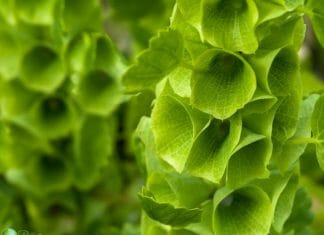
Bells of Ireland
Despite their namesake, these majestic bell-shaped greens are native to the Turkey, Syria, and Caucasus regions. They have a scent that many people cannot really describe. The thing about the Bells of Ireland is that they can get so tall.
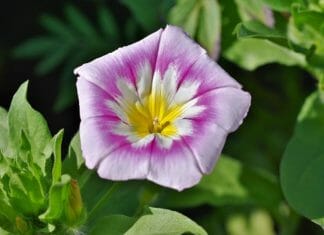
Bindweed
Perennials
Bindweed (Convolvulus arvensis) is a perennial herbaceous climber from Eurasia. This plant is found in most regions where it was accidentally introduced as a contaminant in horticultural and agricultural seeds.
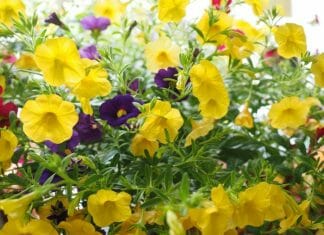
Calibrachoa
Calibrachoa is sometimes seen adorning cascading planters or hanging baskets and other containers, a hardy, and delicate flower. It's not the most popular choice in terms of formal arrangements and bouquets. Still, when presented as a potted plant, Calibrachoa is a flower with deep symbolism for its recipient.
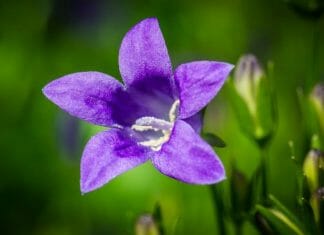
Campanula
As a roadside flower that is now spreading in many regions of the world, the Campanula flower is a striking purple or blue addition to your meadow. This plant is a genus of approximately 500 species of plants in the Campanulaceae family native to the northern hemisphere's temperate regions.
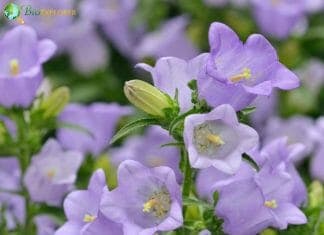
Canterbury Bells
Biennials
With their large, bell-shaped flowers, Canterbury Bells are a pleasant addition to cottage gardens and natural plantations. Canterbury bells (Campanula medium) originate from southern Europe but have been present in many gardens since the 16th century.
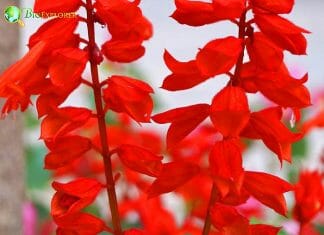
Cardinal
Perennials
Cardinal flowers grow well as solitary plants in natural landscaping, mixed flower beds, and borders. The genus Lobelia includes 60 different species of flowers, primarily blue bell-shaped flowers in loose clusters or spikes.
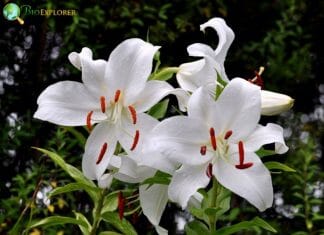
Casa Blanca
Perennials
Casa Blanca flowers are predominantly whiteto pinkto purple-red, and some are golden yellow in color. Their medium texture blends in with the garden. Casa Blanca belongs to a genus of approximately 100 species of herbaceous and bulbous perennials native to South America, North America, and Europe.
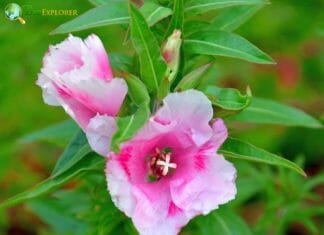
Clarkia
Annuals
Clarkia amoena, also known as the satin flower, is native to western North America from central California to British Columbia. The four-petalled flowers (2 to 3-inches in diameter) are red, pink, or lavender, sometimes with a spot or blotch at each petal's base.
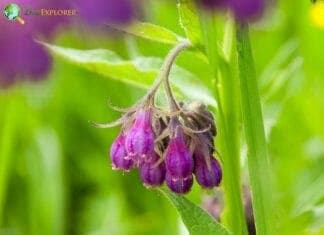
Comfrey
Perennials
Symphytum officinale, commonly known as comfrey, boneset, or knitbone, is a large, bulbous, thick, tufted perennial (up to 3' tall and 2.5' wide). The tubular, flower-like snowdrops, white to purple to pink, appear in pendulous clusters from mid-spring to early summer.
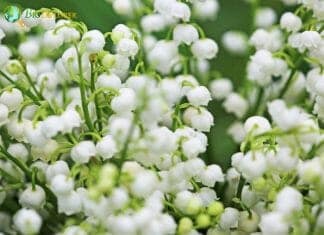
Convallaria
Perennials
Convallaria majalis (Lily of the valley) is a fragrant perennial herbaceous plant. The only species of the genus Convallaria from the Asparagaceae (asparagus) family. Convallaria majalis is a perennial rhizome herb that typically forms a ground cover that extends indefinitely up to 8-12 inches high.
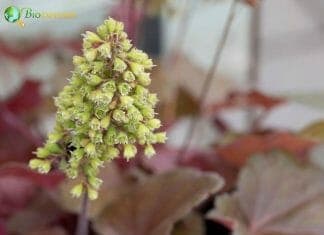
Coral bells
Perennials
Coral bells (Heuchera Americana) are the world's perennial coleus. First, these plants came in soft colors with small, insignificant flowers. Now they are available in a wide range of colors, with some varieties explicitly cultivated for their flower masses. The small, greenish-white flowers in airy, open panicles are borne on slender, thread-like stems extending well above the mound of leaves, typically 18-24 inches high in late spring and early summer.
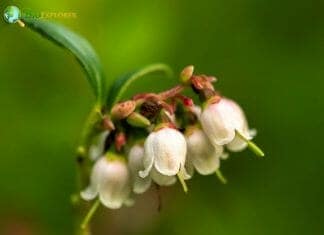
Cowberry
Cowberries are harvested wild and used in various Alaska, Canada, Russia, and the Northern Baltic dishes. The genus includes around 450 species of flowering plants. The bell-shaped flowers are pale-pink to white, 3 to 8 mm long. The flowers typically bloom in early summer.
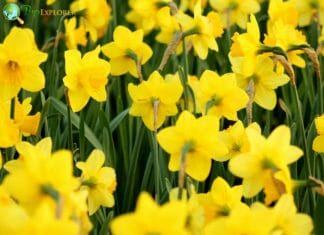
Daffodil
Perennials
Daffodils herald spring and the awakening of nature with their trumpet-shaped blooms. They are among the few plant species that can successfully grow in snow. Daffodils are typically golden in color. However, there are new varieties of daffodils in pink, green, orange, yellow, and white.
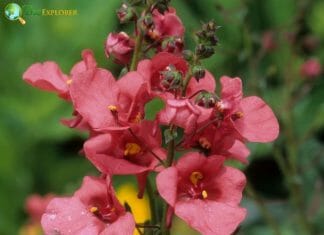
Diascia
Annuals/Perennials
Diascia sometimes referred to as Twinspur, is loved for its luscious spring blooms in a range of cute colors, including white, orange, coral, lavender, and pink. A small nestled plant that looks fabulous in front of flower beds and garden edges. During flowering, a racemose apical inflorescence is formed, consisting of salmon, purple, white, orange, pink, or other colored flowers.
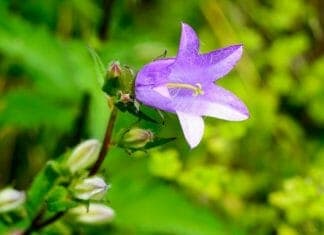
Epigaea
Epigaea is a native forest shrub in the Ericaceae family that develops as an evergreen carpet in forests and peaty clearings. Epigaea is native to eastern North America and is the only member of the genus. The blooms of the Epigaea are dark pink, pale pink, or white.
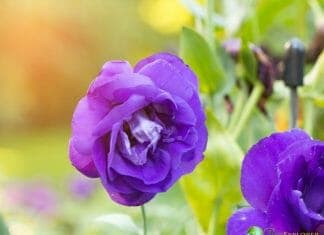
Eustoma grandiflorum
Biennials
Often preferred by flower designers when a classy flower is required for an arrangement, Eustoma grandiflorum is the epitome of a versatile and glamorous flower. The tousled petals and elegant buttons are available in various colors. They are available in different colors: pink, purple, blue, and white, as well as two-tone combinations of these shades.
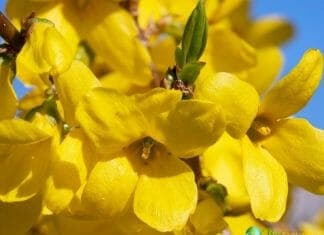
Forsythia
Often called the harbinger of spring, forsythia blooms in bright yellow flowers before its leaves emerge. This creates impressive golden dots in landscapes that break up the gloomy, snowy ground with the promise of what is to come. The blooms are produced in early spring, before the leaves appear, for a welcoming show of vibrant yellow flowers.
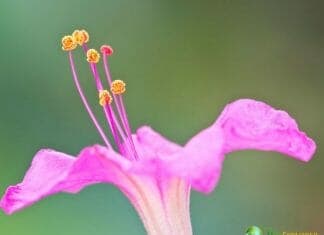
Four O'clock
Perennials
Four O'clock will delight both your eyes and your nose, with fragrant tubular flowers that come in a variety of patterns and colors. Often, you even get different colored flowers on the same plant. the flowers are tubular, red, pink, or white, up to 6.5 cm long and 3.5 cm wide with 5 to 6 stamens.
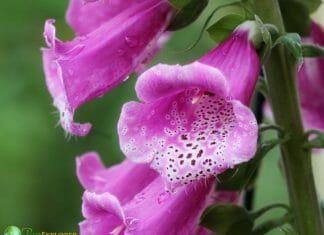
Foxglove
Biennials
Foxglove (Digitalis purpurea) is a short-lived perennial or biennial Western European plant from the Plantaginaceae family (plantain). Pendent, 2-3" long, funnel-shaped, tubular, purple to dark rose-pink (often white) flowers with white and purple spots inside are tightly bunched along with each spike.
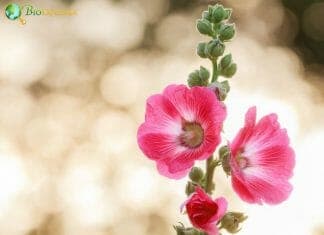
Hollyhock
Biennials
An epitome of cottage gardens, Hollyhocks (Alcea rosea) are towering flowers that bloom in a wide range of colors for an extended period in summer. Hollyhocks are available in various colors, including yellow, white, red, purple, pink, blue, and even black.
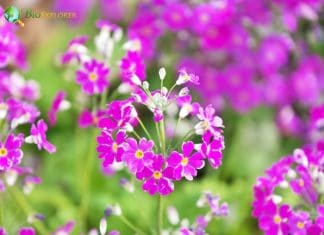
Japanese Primrose
Trees
Japanese Primrose is called sakurasou in Japan because it resembles Sakura, the flowering cherry tree. The leaves of the Japanese Primrose possess a rosette arrangement. The hairy petiole measures 1.4-4.7 inches in length. It signifies first Love, youthful Love, and longing in Japan.
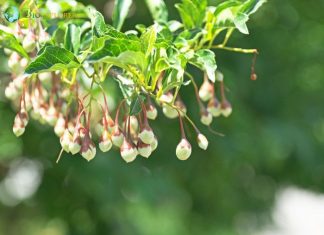
Japanese Snowbell
Trees
The Japanese Snowbell is a deciduous tree that can grow to 15-25 feet. The leaves of Styrax japonica are alternate and simple. They are broad-elliptic to elliptic-oblong. These leaves are medium to dark green with a measurement of 2.5-9 cm. long and 1.3 -4 cm wide.
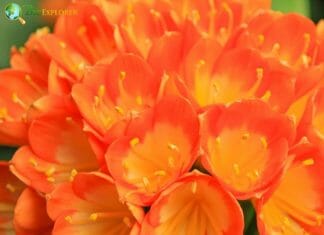
Kaffir Lily
Perennials
The Kaffir Lily (Clivia miniata) really knows how to put on a show - the display of its vivid buds is a spectacular precursor of spring. The conspicuous funnel-shaped blooms are produced in an umbellate-shaped flower head, colored yellow, red, or orange.
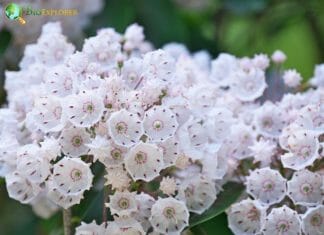
Kalmia
Kalmia flowers can only grow wild in a few selected habitats worldwide and are perhaps better known as mountain laurel. Each flower (up to 1 inch wide) is cup-shaped with 5 sides and ranges from white to pink with purple markings interior.
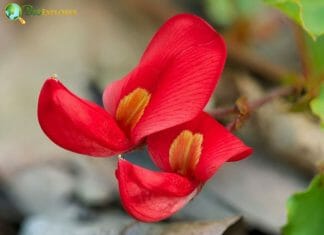
Kennedia
Perennials
Kennedia is a genus of about 13 species of flowering perennials in the Fabaceae (pea) family and is native to Australia. The flowers are often arranged in the axils of the leaves, relatively showy and prominent, purple, blue, red, or almost black with leaf-shaped bracts at the base, but occasionally drooping when the flowers open.
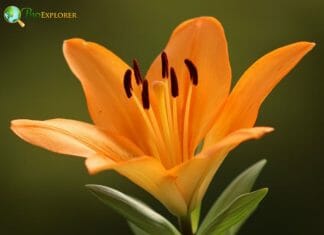
Lily
Perennials
The beautiful flower of the lily plant makes it among the most well-known flowering plants in horticulture. But this eye-catching flower is more than it looks. The flowers are generally scented and come in various colors, including pink, purple, red, orange, white, or yellow.
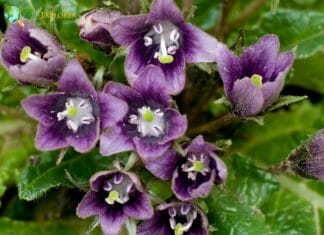
Mandrake
Perennials
Also known as Satan's apple, long missing from American pleasure gardens, mandrake (Mandragora officinarum) is staging a comeback, thanks to Harry Potter films and books. The solitary flowers have a bell-shaped crown of 5 petals, and they vary from purple to green-yellow. The flowers bloom in the center of the plant in spring.
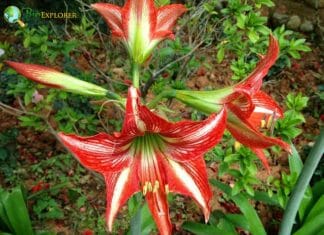
Montbretia
Perennials
Extremely attractive and exotic in appearance, Montbretia produces decorative clusters of upright, sword-shaped leaves and glowing sticks of yellow, orange, red, and scarlet tubular flowers that bloom for 5 to 8 weeks from mid-summer to mid-fall. Most Montbretia flowers are arranged in an intricate panicle.
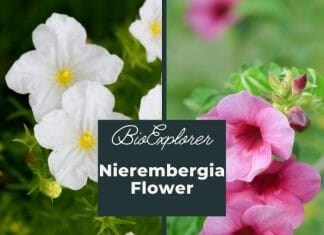
Nierembergia
Annuals/Perennials
Nierembergia's adorable cup-shaped flowers and neat growing habits make them a valuable annual bloom for borders and containers. Nierembergia has pretty, slender, narrow leaves covered with purple or bluish flowers at the tips. This flowering plant grows up to 6 inches tall and up to a foot wide.
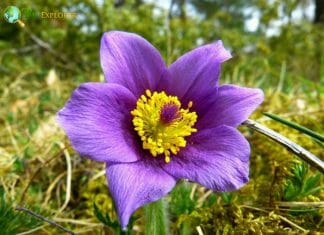
Pasque flower
Perennials
As a harbinger of spring, the pasque flowers (Pulsatilla vulgaris) begin to appear before the plant's fern-like, feathery foliage has fully developed. The flowers are usually purple, but some cultivars also have red, pink, or white flowers.
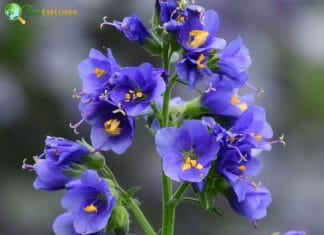
Polemonium
Perennials
Jacob's ladder (Polemonium caeruleum) is a perennial species of the Polemoniaceae family. It is native to the temperate regions of Asia and Europe, where it grows mainly in meadows, grasslands, and damp forests. They are available in yellow, blue, white, or pink, depending on the variety.
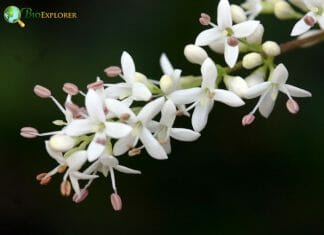
Privet
Shrubs/Trees
Privet (Ligustrum vulgare), with its glossy dark green foliage, forms a dense living fence or privacy hedge. These plants can be deciduous, semi-evergreen, or evergreen, depending on the variety you choose and where you live. The genus includes around 50 species of upright, evergreen, or deciduous shrubs, which often form medium-sized to small trees and are native to Asia, North Africa, and Europe.
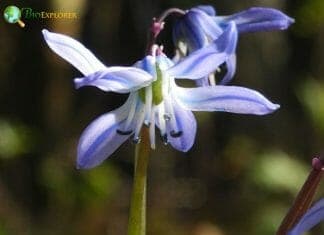
Scille
Perennials
The Scilla genus includes around 80 species of bulbous herbaceous perennial plants in the Asparagaceae family, a subfamily of the Scilloideae. Most flowers bloom in early spring, but some bloom in fall. Several species of Scilla are popular as ornamental garden plants. Each flower has 6 petal-like tepals, and each tepal has a distinctive dark blue midrib (median stripe).
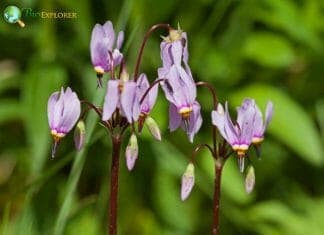
Shooting Star
Dodecatheon media, a shooting star, is a very popular native North American wildflower, commonly found in open woods, prairies, meadows, rocky wooded slopes, and bluff ledges. The shooting star is a plant species in the Primulaceae (primrose) family. There are more than 17 species in the Dodecatheon genus.
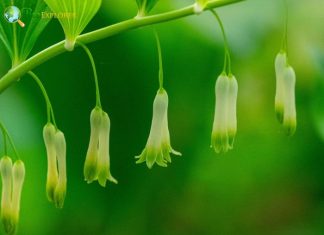
Solomon's Seal
Perennials
Polygonatum biflorum, commonly known as Solomon's seal, is a classic garden shade plant that gives garden beds an architectural component thanks to its arched stems. There are around 60 species in this group of perennial grasses in the Asparagaceae (asparagus) family.
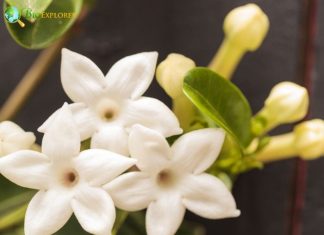
Stephanotis
Stephanotis is a genus of the Apocynaceae (dogbane milkweed) that contains around 15 species of climbing plants native to Madagascar and Southeast Asia. Stephanotis plants are cultivated for fragrant, waxy, tubular, generally white flowers. The leaves are opposite, oval to elliptical, and leathery.
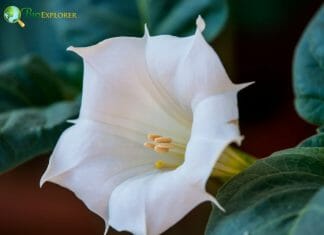
Thornapple
Shrubs
Datura stramonium, commonly known as thornapple, Jimson weed, devil's trumpet, or devil's snare, is a flowering plant that belongs to the Solanaceae (nightshade) family. About 10 species of thorn apple are common in tropical and temperate climates around the world.
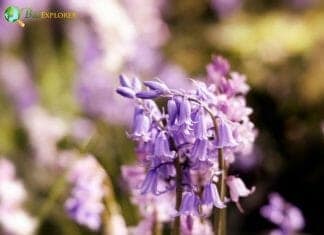
Throatwort
Annuals/Perennials
Intricate and delicate, Throatwort (Trachelium caeruleum) dazzles with its thick cushions of blue-violet flowers and gives any garden or flower arrangement an elegant, lace-like charm. The flowers come in shades of white, green, pink, purple, and blue, but the flowers of the white varieties age more quickly.
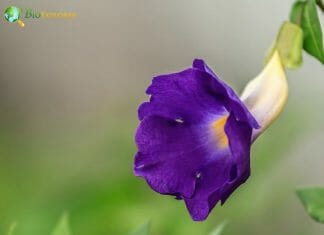
Thunbergia
Annuals
Thunbergie has been called "the most gorgeous vine in the world" by some. This blooming, twisted vine looks like morning glory from a distance, and the flowers are similar up close. Thunbergia grandiflora is a vine in the Acanthaceae family. There are 100 to 150 species of flowering plants in the Thunbergia genus.
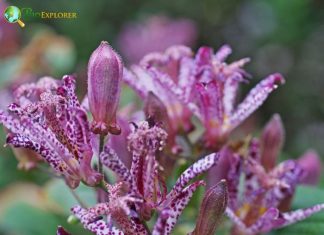
Toad Lily
Perennials
Tricyrtis affinis is a perennial Japanese plant of the Liliaceae. This species is endemic to Japan and can grow to a height of 30-60 cm. The flowers of Tricyrtis affinis are white with purple spots. The flowers have six free tepals in two whorls. Tricyrtis is a symbol of fertility.
Cite This Page
Source: https://www.bioexplorer.net/plants/flowers/bell-shaped/